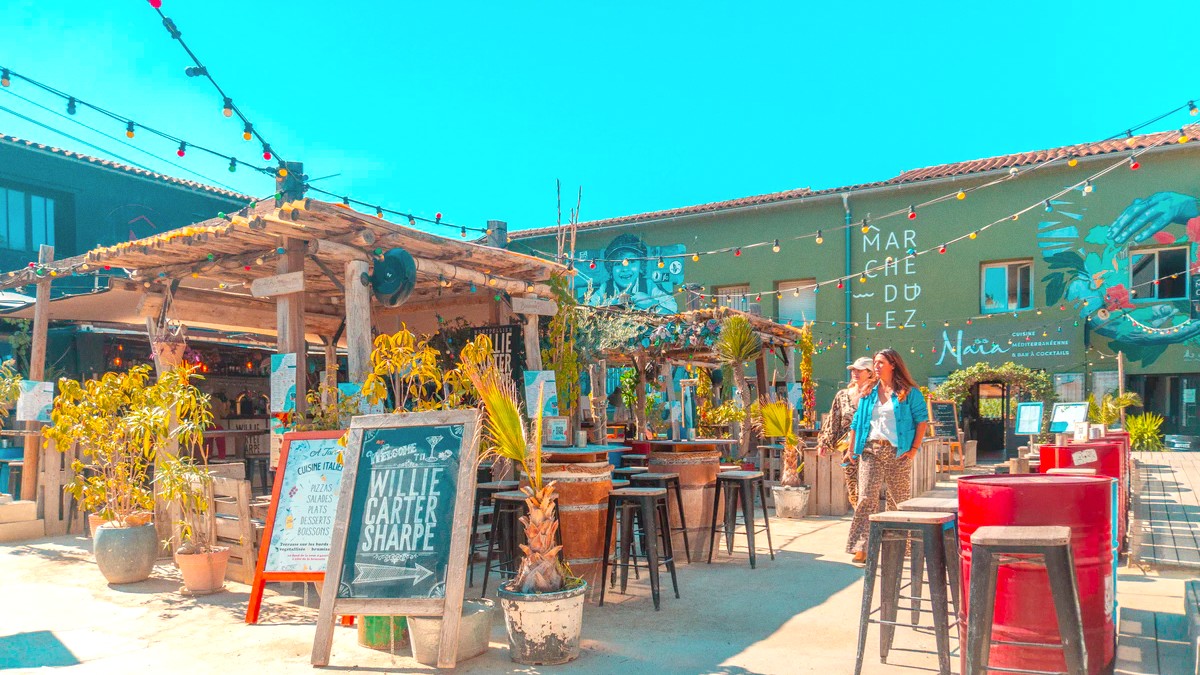
Languedoc Roussillon, France
The historical and cultural context of Montpellier's iconic landmarks is deeply intertwined with the city's past, from its medieval origins to its royal connections.
Each site tells a story, contributing to the city's unique charm.
Some hotels or bars offer rooftop views, providing unique perspectives of the city (e.g., L'Arbre Blanc rooftop bar).
The well-preserved old town. It features a medieval street plan, many hôtels particuliers (grand private mansions, often with hidden courtyards), and charming squares.
A striking example of late 20th-century neoclassical architecture. It contrasts with the old town, showing modern urban planning principles.
Cathédrale Saint-Pierre, Église Saint-Roch, and the historic Synagogue of Montpellier reflect the city's diverse spiritual heritage.
Porte du Peyrou (Arc de Triomphe) and the Statue of Louis XIV mark historical significance.
Montpellier itself has no major Roman ruins like nearby Nîmes, but its medieval core presents a living historical site.
Montpellier offers urban green spaces and easy access to natural beauty.
France's oldest botanical garden (1593). A peaceful oasis within the city, with diverse plant collections.
A grand 17th-century esplanade with tree-lined paths and fountains. Popular for walking and scenic city views.
Flows through Montpellier, offering pleasant walks along its banks and occasional leisure boat trips.
Palavas-les-Flots, Carnon-Plage, and La Grande Motte are close by. Reach them easily by public transport (tram plus bus transfer). Sandy shores and Mediterranean swimming.
A distinctive mountain peak visible from Montpellier. Popular for hiking and known for its wine region.
The nearby Camargue region (a short drive) is famous for flamingos, wild white horses, and black bulls. Étang de l'Or near the coast holds various bird species.
Discover Montpellier's lesser-known spots for a more intimate experience.
Explore Rue du Bras de Fer (picturesque medieval street) and hidden courtyards of Hôtels Particuliers (look for open doors).
Visit Marché du Lez (urban food vibe) and Parc du Domaine de Méric (quiet park along Lez River).
The hinterland of Montpellier presents less-explored natural and cultural experiences, including the Pic Saint-Loup wine region, the Gorges de l'Hérault, and charming villages like Saint-Guilhem-le-Désert.
Montpellier's attractions are many, from ancient sites to modern art, green spaces to bustling squares. Each offers an unique window into the city's spirit.
A structured itinerary or spontaneous exploration both work well to discover its various facets.
Beyond museums, Montpellier offers a dynamic cultural scene with art galleries, exhibition spaces, and performance venues.
Montpellier's history is visible throughout its streets and buildings, notably within its well-preserved medieval core.
Beyond city landmarks, Montpellier presents numerous parks, gardens, and access to the Mediterranean.
Montpellier combines historical grandeur with a contemporary culture, making its attractions diverse and compelling.
Experience the city's landmarks like Place de la Comédie and Musée Fabre, central to Montpellier's identity.
Explore museums, galleries, and performance venues that highlight Montpellier's artistic and intellectual legacy.
Relax in city parks or venture to nearby beaches and natural areas for outdoor enjoyment.
Check attraction opening times and admission fees beforehand. Many sites close on Mondays. Consider a city pass for cost savings.
Book attractions via GetYourGuideThe city center is walkable. Utilize Montpellier's efficient tram system for longer distances to reach museums, neighborhoods, and the train station.
Promenade du Peyrou for sunsets, Place de la Comédie for lively street scenes, and the narrow streets of the Ecusson for medieval charm.
Many private mansions (hôtels particuliers) in the Ecusson have hidden courtyards. Some open to the public; look for signs or open doors during the day.
For local recommendations, chat with shopkeepers, café owners, or fellow visitors. They may share insights on current events or lesser-known spots.
Montpellier's museums display rich collections, from fine art to regional history and contemporary works.
Walking through Montpellier's historic districts uncovers centuries of history at every turn.
Many historic areas in Montpellier, especially the Ecusson, have cobblestone streets and narrow passages, which may present challenges for mobility.
Modern areas like Antigone and Port Marianne are more accessible with wider sidewalks and ramps. Public transport is generally wheelchair friendly.
Consider grouping nearby attractions for efficient exploration. Utilize the tram system for reaching points outside the city center.
Montpellier's landmarks transform at night, offering different photo opportunities and an unique ambiance.
Montpellier provides activities and sites that children and families enjoy.
Enjoy peaceful retreats within the city's green heart.
These spaces provide relaxation and opportunities for gentle walks.
Day trips from Montpellier open up more natural and cultural wonders.
Montpellier's architecture ranges from medieval to striking modern designs.
Observe how different eras shaped the city's built environment.
Most areas are accessible, with elevators and ramps. Some older sections may present limitations.
A modern venue with full accessibility for performances and events.
Cobblestone streets and narrow passages can pose challenges. Some attractions within the Ecusson are accessible.